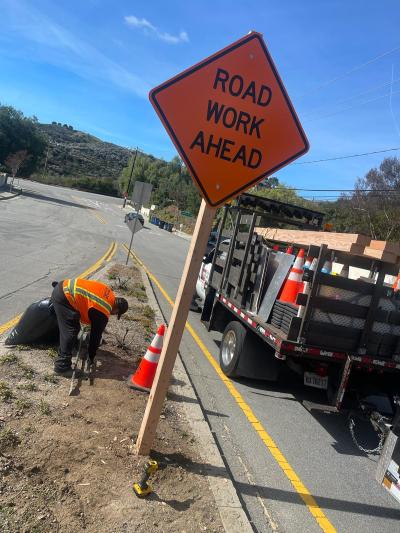A unique project with roots stretching back to the late 1920s is steadily working its way across Lake Sakakawea near New Town, ND.
Located in the heart of the Fort Berthold Reservation, the Four Bears Bridge on Highway 23 serves as a critical connection between the two sides of the state. A bridge replacement is currently underway, sponsored by the North Dakota Department of Transportation (NDDOT) and the Mandan, Hidatsa and Arikara Nation.
History
Beginning around the late 15th century, the Mandan, Hidatsa and Arikara tribes lived in the fertile river bottomland in north central North Dakota. In 1851, the Fort Berthold Indian Reservation was established and the Three Affiliated Tribes were given a residual of those lands on which to live.
In 1934, a bridge was built on the reservation to span the Missouri River at Elbowoods (a town now underwater). The bridge was named Four Bears, with the north half dedicated to the Hidatsa Chief Four Bears and the south half dedicated to the Mandan Chief Four Bears.
Designed by the North Dakota State Highway Commission, this bridge represented its first use of a continuous truss design. It served as a link between Canada and Colorado on Highway 8.
In 1943, severe flooding occurred in the lower Missouri River basin and the U.S. Army Corps of Engineers began surveys for a flood control dam. Construction of this dam continued from 1945 to 1954. The project covered about 155,000 acres, or almost 25 percent of the reservation. Because of this, the tribes and many white settlers had to be relocated.
Part of the bridge made the move with them. The bridge was dismantled, trucked and barged 70 miles upstream to New Town (the merging of the towns that were flooded).
There, the 1,425-ft.-long continuous-through-truss main spans were reused as the main channel spans for the second Four Bears Bridge, which was built over the reservoir in 1955.
However, by the 1990s, the second Four Bears Bridge proved to be too narrow to safely serve its purpose. Its 20-ft. roadway width was reportedly substandard in both width and safety features, such as its inadequate safety barrier/railing.
In 1993, the NDDOT began a series of studies to evaluate options for improvement. The result was a decision to replace the bridge with a wider bridge –– one that would incorporate input on aesthetic features from the Three Affiliated Tribes.
Placement of the new bridge was planned for 100 miles north of the current bridge, which would remain in place to carry traffic until the new bridge was completed.
The Third Four Bears Bridge
Bids for the new bridge project were let in February of 2003 and ground was broken in May of that year. Mike Kopp, communication liaison of NDDOT, reported that the project was originally estimated to cost $43 million.
However, once low bids came in, it was apparent that the isolation of the job combined with the rising costs of materials would boost the final bid price to $55 million.
“The extra cost nearly scrubbed the project,” Kopp said. “Except that the Three Affiliated Tribes Chairman Tex Hall went to work with the Bureau of Indian Affairs, Department of Interior, while North Dakota’s Congressional Delegation did some arm twisting in Washington and the state appealed to Federal Highway to come up with the additional money. It took only weeks for the money to be secured, and the project was underway.”
Kopp explained that discussion and planning for the bridge began over a decade earlier, but it wasn’t until the project moved up on the federal priority list that it became a reality.
“It was not a politically easy task,” he said. “As you can imagine, to get federal attention to a remote rural location such as this was tough. The bi-partisan effort of the Democrat Congressional Delegation and the Republican State Administration helped secure the commitment. However, nothing could have happened without the involvement of the Three Affiliated Tribes. The involvement of the TAT was critical not only in the planning of the bridge, but also the design and placement of the bridge.”
According to Kopp, the Tribes consulted with architects on the aesthetic appearance of the bridge. Medallions, markers and storyboards along the bridge walkway will tell the story of the three tribes and their history in this region.
“Their involvement was critical in setting up the construction area of the bridge,” Kopp said. “For 40 years, they had used the west bank as a sacred ground for their powwows and spiritual events. The staging area for the new bridge would have to be built right on sacred grounds. Thus, state cultural anthropologists and tribal cultural authorities worked for months to find how to transfer the spirituality of the grounds to a new location. Once that was done, the state built a new powwow grounds about 1,000 yards south of the old grounds. The staging area for the bridge was now possible.”
Kopp explained that Caterpillar dirt movers, graders and loaders leveled the powwow grounds so the manufacturing plant for the bridge could be built. Once the ground was blessed by tribal men, work began in July of 2003.
On October 1, the project passed the halfway mark. It is expected to open to traffic by the fall of 2005.
Once the new bridge is open, the historic Four Bears Bridge will be dismantled –– a project in itself that will take another six months. Kopp noted that the dismantling will be done carefully to prevent any pieces from falling into the water.
Even the piers will be broken apart and carted away. The piers will be rubblized to a depth of 1,790 ft. and left on the lake bottom to form a fish habitat. In addition, portions of the bridge will be salvaged and used as historic monuments.
The new bridge design includes two abutments, 14 piers placed 316 ft. apart, 454 9.5-ft. typical segments in the spans between the piers, 28 5.5-ft. pier segments on top of the 14 pier columns, and 15 2-ft. closure joints at the mid-point of each span between piers.
The prime contractor for the bridge project is Fru-Con Construction of Balwin, MO. Fru-Con is owned by Bilfinger & Berger, a German company that is one of the world’s 15 largest contractors.
The project manager is Cam Green, a native of Vancouver, British Columbia. Kopp noted, “Thus, from the beginning, the Four Bears Bridge project is an international project and has been covered by trade publications in Europe as well as the U.S.”
Facing challenges
According to Kopp, the main challenge to this project is climate.
“Since the job is so far north –– cold country in a region susceptible to cold Canadian air –– the cold weather makes a mess of things when it freezes the lake,” he said. “Last winter’s freeze-up came much earlier than anticipated. The lake/river was frozen over by Thanksgiving –– much earlier than normal according to old timers in the region. The early freeze-up meant the job struggled to stay on schedule this spring when work resumed.”
Kopp noted that the cold weather also made the tugs do extra duty.
“This is a land-locked lake. The tugs and barges shipped in here to do the job couldn’t just float down to southern and open waters when it got cold,” he said. “All the 100-some barge segments [Flexifloats from Houston, TX] had to be removed from the water, and then the tugs were lifted out until spring.”
However, he noted that as long as worked continued in the fall and spring, the tugs became ice breakers, plowing and chopping through the ice from the shore to the piers where the work needed to be done.
The location of the project presents another challenge altogether. “This is a very remote part of the nation,” Kopp explained.
“Most people do not realize how remote it is here. The bridge is being built outside a town of 1,500 people. It’s the largest town for 70 miles,” he said. “Therefore, any specialized work, repairs or resources are an hour-and-a-half away. The point is that transportation is a challenge. Getting the large equipment in here requires lots of trucking, and with the state’s highway system under a seasonal load restriction, the window of opportunity for shipping time is even more limited.”
In addition to limited supplies and restricted transportation, manpower is also short.
“At peak employment, 190 people are working here on the bridge,” Kopp said. “They have come from other states, other countries and other ethnic groups. This being an Indian Reservation, contractors here are bound by law to hire a significant portion of their workforce through the tribal employment rights office.
“This has meant few skilled people in the nearby workforce, and thus the start-up period required much learning and teaching. Many of the early hires just couldn’t cut it, and were replaced, extending the learning curve for the new hires.
“Now, the workforce that is here, both local and otherwise, are skilled and competent workers, getting the work done with the speed that is needed to complete the job in time for people to drive on the new bridge next fall,” he added.
Kopp reported that nearly half the workforce is Native American, and 10 percent is female. Ten states and eight countries are represented in the workforce.
Subs, Equipment and Materials
Major subcontractors for the job include JD Steel, Polo, MO, reinforcement steel; Watford City Ready Mix, Watford City, ND; Harris Construction, Kenmare, ND, earth moving; and Main Electric, Minot, ND, wiring for the buildings and casting yard.
Fort Berthold Development (a tribal entity) did some of the exterior carpentry work around the office trailers.
Major equipment being used on the job includes a Manitowoc 2250 300-ton crane, a Demag 1500 cc 300-ton crane, a Manitowoc 4100 230-ton crane, a Manitowoc 555 150-ton crane, an American 275 HC 275-ton crane, two Terex earth scrapers and a Grove hydraulic boom 650.
A Paolo Denicola straddle crane with 115-ton capacity built in Italy is also on the site, as well as a “very old and feeble P and H antique (70-ton).”
In addition, a beam and winch designed and built in Slovakia by Struachness was used on top of the cantilever spans to lift segments in place.
Pier segments weigh about 98 tons each, and include 47 cu. yds. of concrete and 12,338 lbs. of epoxy-coated rebar. The typical segments weigh about 70 tons each, and include 35 cu. yds. of concrete and 5,500 lbs. of epoxy-coated rebar.
All the segments combined will use 16,750 cu. yds. of concrete, which is enough to build a sidewalk 4 in. thick, 5 ft. wide and 51.5 mi. long.
Thirteen pipe piles measuring 36 in. in diameter were driven 60 to 90 ft. into the ground with a Menck hydraulic hammer. The hammer weighs about 56 tons and delivers 147,500 ft./lbs. of energy with each blow.
Combined, the bridge piers will use 4.5 mi. of pipe piles, 12,600 cu. yds. of concrete, and 1,820,000 lbs. of steel rebar.
Today's top stories















